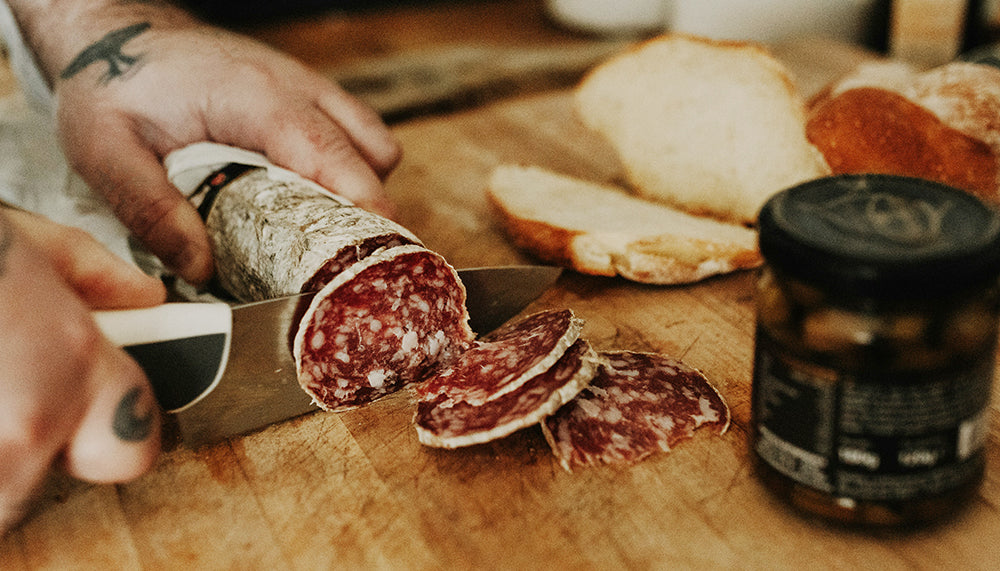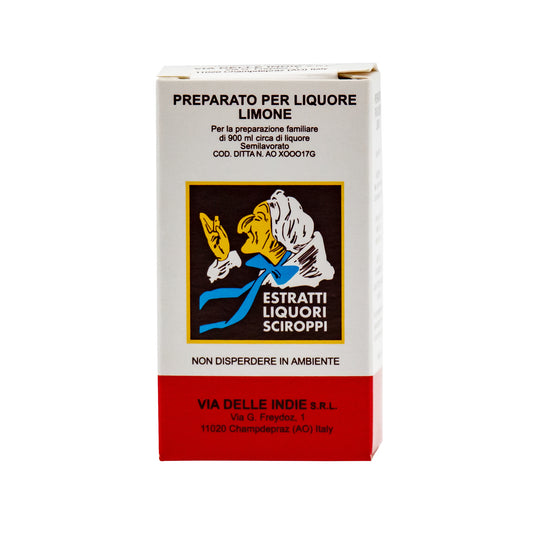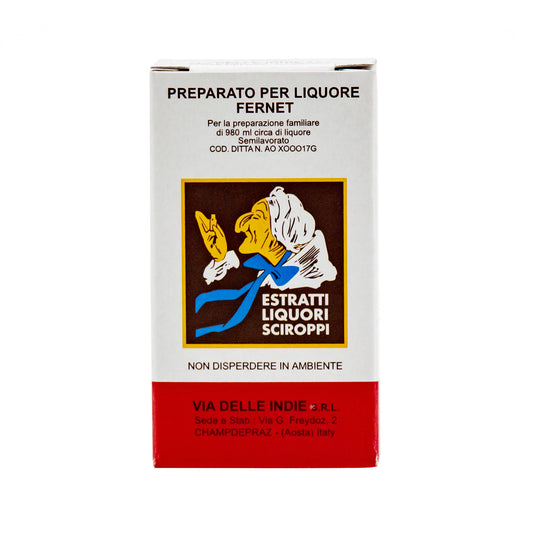Some essential tips for making salami and a delicious Tuscan Salami recipe!
When making any cured foods being sanitary is paramount or you may make someone sick. Because of the warm, moist conditions involved in curing foods bacteria can multiply with abandon.
Follow this list of essentials to ensure you have a delicious and safe salami to share with your friends and family!
Make sure you use the amounts stipulated in recipes. A strong concentration if the key factor in preventing anything harmful from growing. A standard ratio is 2.75% salt.
CURING SALTS (NITRITES AND NITRATES)
Nitrites are added to cures for dry-curing or smoking, processes in which meat is held at between 4 and 60C. Nitrites have three main functions. 1. They kill a range of bacteria. 2. Nitrites help to preserve the pink colour we associate with tasty cured meats. 3. They add a pleasantly sharp flavour.
Nitrates are also essential in the curing process and act like time release for items requiring a long curing time, like salami.
LIVE CULTURES
VBM salami culture feeds on the sugars found in meats and releases lactic acid, reducing the PH level and thereby preventing bacterial growth. When working with live cultures, which are freeze dried and need to be rehydrated, its important to use distilled water. Some water is chlorinated, which could kill the live cultures.
SUGAR
We recommend using a brewing sugar called dextrose if your recipe calls for some sugar. It's a finely textured glucose derived from cornstarch. It's great to use in dry-cured sausages as it dissolves more easily and is distributed throughout your meat mixture than granulated sugar.
MOULD
Rule of thumb; fuzzy mould, no matter what colour, is bad, as is any mould that is not white, and should be wiped off with a clean cloth soaked in vinegar. Fuzzy mould can even dig through the casing and damage your sausage, if you find a lot of it on your salami we suggest you through it out to be safe.
White mould culture is generally considered to be the good mould in that it prevents bad moulds from growing. It feeds on the oxygen at the surface if the sausage and creates a protective layer.
TROUBLESHOOTING DURING THE DRYING PROCESS
One of the biggest problems with home dried sausages is 'case hardening'. It's when the casing dries out preventing water from leaving the sausage. A sausage with casing hardening will develop a grey ring around the outside with a red, not quite dried interior. examine your sausages daily to check the texture. The casing should feel hydrated, not dried out; it should have a soft texture. If it feels too dry try misting them with water one a day for the first week.
The next problem is mould. If your having an issue with fuzzy mould wipe down your sausages with vinegar. We also recommend using a good 'white mould' so the bad fuzzies have less chance of taking hold.
The third problem is achieving a high enough acidity within the sausage. (or a low pH of 4.9 or below). If your sausages are not drying properly it could be they may not have fermented properly. Measure your sausages with pH paper or pH metre, if it doesn't have a pH of 4.9 or below they may not dry properly.
DRYING TIMES
This can be quite difficult to get right when your just starting out as 'doneness' is not measured by temperature but is determined by water loss.
One way is to weigh your sausages after you stuff them and take note of the weight. (A tag with the weight noted on each sausage is recommended) Then when you think they may be close to or done you can simply weigh them. Generally 30% weight reduction indicates its done curing.
Touch is a fairly reliable means of judging 'doneness'. Squeeze the sausage, it should feel stiff, almost hard, all the way through. This method takes time to master, you will need to have a pretty good sense of your drying environment. You can cut a section off the end of your sausage if your unsure. If the centre still has a raw appearance, a tacky, squishy texture, return the sausage to dry some more.
STORING
Keep dry cured sausages in the fridge, preferably wrapped in butcher's paper or vacuum sealed bags. They will keep for a month or more if you store them with care.
Tuscan Salami Recipe
A delicious salami with red wine and fennel
Makes approx 1.5kg of dried sausage
Ingredients:
- 450 grams pork back fat, diced
- 1800 grams boneless pork shoulder butt, diced
- 56 grams salt
- 7 grams Cure #2
- 0.5 grams VBM salami culture
- 60ml distilled water
- 3 grams of dextrose sugar
- 12 grams fennel seeds - toasted & cracked
- 12 grams coarse ground pepper
- 6 grams minced garlic
- 125ml dry red wine
- 55 x 500mm Tied End Casings or a 55mm Casing Stick
- You can use whatever size you like, it will just change the drying times.
Method:
- 1: Grind your fat while it’s still cold, or partially frozen, through a large mincer plate into a bowl resting in ice and set aside.
- 2: While your pork is still cold, or partially frozen, combine it with the salt and Cure #2 and grind through a small mincer plate and set aside in a bowl resting in ice.
- 3: Combine your meat and fat and set aside in the fridge.
- 4: Dissolve the VBM culture, according to the packet instructions, in the distilled water and add to your meat along with the rest of the of the ingredients.
- 5:Time to fill your casings! Don’t forget to prick the casings with your pricker to remove any air pockets and facilitate drying.
- 6: Cover your salami with a clean towel and leave out at room temperature, ideally around 30C for 12 hours to incubate the bacteria. The beneficial bacteria will grow and produce more lactic acid at a warmer temperature.
- 7: Time to hang your salami, ideally at 15C with 60 - 70 percent humidity, until it is completely stiff throughout and/or it has lost 30% of its weight.






